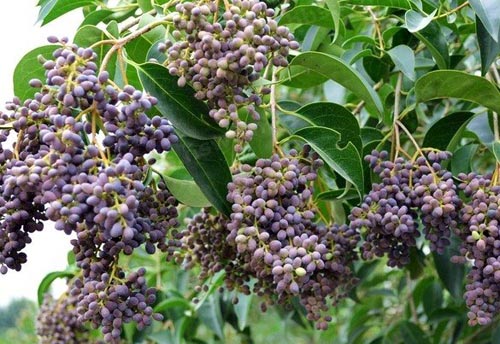The source is from the fruit of Ligustrum lucidum Air., family Oleaceae. The herb is mainly produced in Shaanxi, Gansu and the south areas to the Yangtze River. The medicinal material is collected in winter when it is ripe, slightly steamed or scalded in boiling water, and then dried in the sun. It can be used crudely or prepared with wine for medication.
Medicinal Properties: Sweet and bitter in flavor, cool in nature and attributive to the liver and kidney meridians
Actions: Moisten yin and clear away heat, and blacken the hair and promote the eyesight.

Application
1. For deficiency of liver-yin and kidney-yin manifested as blurred vision, eyesight being falling, whitening of hair, soreness of waist and tinnitus, it is usually combined with Hanliancao (Herba Ecliptae), or again with Shudihuang ( Rhizoma Rehmanniae Praeparata ), Tusizi ( Semen Cuscutae), and Gouqizi (Fructus Lycii), etc. For whitening of hair, it is usually combined with Heshouwu (Radix Potygoni Multiflori ) and Gouqizi ( Fructus Lycii).
2. It is also used for fever due to yin-deficiency, hectic fever and vexation. Its action of tonifying yin is not so effective as that of Hanliancao (Herba Ecliptae), but it has action of clearing away heat, so it can be often used in combination with Digupi ( Cortex Lycii), Shengdihuang (Radix Rehmanniae ), and Baiwei ( Radix Cynanchi Atrati) , etc.
Usage and Dosage: 10 -15 g is used in decoction for oral use.








